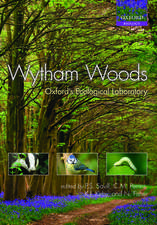A Eutrophic Lake: Lake Mendota, Wisconsin: Ecological Studies, cartea 55
Autor Thomas D. Brocken Limba Engleză Paperback – noi 2012
| Toate formatele și edițiile | Preț | Express |
|---|---|---|
| Paperback (1) | 391.82 lei 43-57 zile | |
| Springer – noi 2012 | 391.82 lei 43-57 zile | |
| Hardback (1) | 587.25 lei 43-57 zile | |
| Springer – 30 iun 1985 | 587.25 lei 43-57 zile |
Din seria Ecological Studies
-
 Preț: 498.23 lei
Preț: 498.23 lei - 18%
 Preț: 1110.68 lei
Preț: 1110.68 lei -
 Preț: 553.71 lei
Preț: 553.71 lei - 18%
 Preț: 1668.11 lei
Preț: 1668.11 lei - 18%
 Preț: 995.99 lei
Preț: 995.99 lei - 20%
 Preț: 1004.69 lei
Preț: 1004.69 lei -
 Preț: 477.09 lei
Preț: 477.09 lei -
 Preț: 318.09 lei
Preț: 318.09 lei - 5%
 Preț: 746.74 lei
Preț: 746.74 lei - 15%
 Preț: 639.24 lei
Preț: 639.24 lei - 15%
 Preț: 639.42 lei
Preț: 639.42 lei - 15%
 Preț: 647.69 lei
Preț: 647.69 lei - 18%
 Preț: 784.01 lei
Preț: 784.01 lei -
 Preț: 379.55 lei
Preț: 379.55 lei - 15%
 Preț: 638.75 lei
Preț: 638.75 lei - 15%
 Preț: 641.55 lei
Preț: 641.55 lei - 15%
 Preț: 629.65 lei
Preț: 629.65 lei -
 Preț: 382.04 lei
Preț: 382.04 lei - 18%
 Preț: 784.16 lei
Preț: 784.16 lei - 15%
 Preț: 640.40 lei
Preț: 640.40 lei - 15%
 Preț: 644.62 lei
Preț: 644.62 lei - 18%
 Preț: 998.03 lei
Preț: 998.03 lei - 18%
 Preț: 942.24 lei
Preț: 942.24 lei - 15%
 Preț: 644.75 lei
Preț: 644.75 lei - 15%
 Preț: 638.61 lei
Preț: 638.61 lei - 15%
 Preț: 644.94 lei
Preț: 644.94 lei - 15%
 Preț: 634.06 lei
Preț: 634.06 lei - 18%
 Preț: 950.57 lei
Preț: 950.57 lei - 18%
 Preț: 1226.14 lei
Preț: 1226.14 lei - 18%
 Preț: 955.08 lei
Preț: 955.08 lei - 18%
 Preț: 942.24 lei
Preț: 942.24 lei - 15%
 Preț: 655.83 lei
Preț: 655.83 lei -
 Preț: 394.84 lei
Preț: 394.84 lei - 15%
 Preț: 633.56 lei
Preț: 633.56 lei - 18%
 Preț: 935.36 lei
Preț: 935.36 lei - 18%
 Preț: 1223.47 lei
Preț: 1223.47 lei - 15%
 Preț: 646.56 lei
Preț: 646.56 lei - 18%
 Preț: 945.69 lei
Preț: 945.69 lei - 18%
 Preț: 1820.71 lei
Preț: 1820.71 lei - 18%
 Preț: 1220.03 lei
Preț: 1220.03 lei
Preț: 391.82 lei
Nou
Puncte Express: 588
Preț estimativ în valută:
75.04€ • 77.31$ • 62.86£
75.04€ • 77.31$ • 62.86£
Carte tipărită la comandă
Livrare economică 24 februarie-10 martie
Preluare comenzi: 021 569.72.76
Specificații
ISBN-13: 9781461264514
ISBN-10: 1461264510
Pagini: 328
Ilustrații: XII, 308 p.
Dimensiuni: 178 x 254 x 17 mm
Greutate: 0.57 kg
Ediția:Softcover reprint of the original 1st ed. 1985
Editura: Springer
Colecția Springer
Seria Ecological Studies
Locul publicării:New York, NY, United States
ISBN-10: 1461264510
Pagini: 328
Ilustrații: XII, 308 p.
Dimensiuni: 178 x 254 x 17 mm
Greutate: 0.57 kg
Ediția:Softcover reprint of the original 1st ed. 1985
Editura: Springer
Colecția Springer
Seria Ecological Studies
Locul publicării:New York, NY, United States
Public țintă
ResearchCuprins
1. Introduction.- The origin of the lake.- The naming of the Madison lakes.- Ownership of Lake Mendota.- The regional setting.- 2. Physical Limnology.- Morphometry and Hydrography.- General Features of the Lake.- Hypsometry of Lake Mendota.- Climate of the Lake Mendota area.- Water budget of the lake.- Thermal structure and heat budget.- Water movement.- Summary. The four seasons in Lake Mendota.- 3. Chemistry and nutrient loading.- Chemistry of the lake water.- Nutrient loading studies.- Sediment composition and chemistry.- Recent sediments in Lake Mendota.- Oxygen in Lake Mendota.- Nitrogen in Lake Mendota.- Phosphorus in Lake Mendota.- Iron and manganese.- Sulfate.- Chloride.- Silica.- Inorganic carbon in Lake Mendota.- Summary.- 4. Phytoplankton.- Methodology for studying phytoplankton populations in Lake Mendota.- Annual cycles of phytoplankton.- Mean depth of chlorophyll.- Surface/volume ratios of phytoplankton cells.- Diatom blooms in Lake Mendota.- Blue-green algae of Lake Mendota.- Buoyancy of the blue-green algae of Lake Mendota.- Where do the algae go?.- Summary.- 5. Phytoplankton photosynthesis and primary production.- Methods.- Calculating whole lake productivity from incubator data.- Photosynthesis/light (P/I) relationship.- Photosynthetic efficiency of Lake Mendota phytoplankton 125.- Primary production in Lake Mendota.- A model for Lake Mendota production.- 6. Zooplankton.- Methods for studying Lake Mendota Zooplankton.- Species composition.- Zooplankton abundance.- Biomass of Zooplankton.- Conclusions.- 7. Bacteria, carbon cycling, and biogeochemical processes.- Methods.- Bacterial biomass and production in the water column.- The impact of Zooplankton feeding on bacteria.- Importance of bacterial attachment to particles.- A model for bacterioplankton growth and disappearance.- Significance of algal excretory products for epilimnetic bacteria.- Bacterial processes in the anaerobic deep-water sediments.- Sulfate reduction in Lake Mendota.- Conclusion.- 8. Higher Trophic Levels.- Bottom fauna.- Fish.- Summary.- 9. Long-term Change in Lake Mendota.- Chemistry and nutrient loading.- Oxygen in Lake Mendota.- Secchi transparency.- Phytoplankton.- Zooplankton.- Bacteria.- Fish.- Conclusion.- 10. Energy flow in the Lake Mendota ecosystem.- Appendix 1. Physical and chemical data.- Appendix 2. Phytoplankton data.













